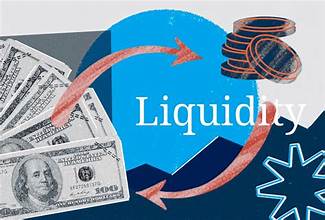Whether you’re trading stocks, options, Forex, futures, cryptocurrency, or even baseball cards, there are certain foundational indicators that every trader should consider. These aren’t magical formulas promising instant wealth but tools to help you build a solid foundation in your trading journey.
When I was a new trader struggling to find my footing, I often wished someone had pointed me toward these five indicators. They aren’t the “holy grail,” but they serve as an excellent starting point for anyone just beginning or feeling overwhelmed.
The Top 5 Indicators for Beginners
- Volume:
Volume measures market interest in a stock, indicating how actively it’s being bought and sold. High volume suggests significant interest, which is crucial for both entering and exiting trades. Without sufficient volume, you might struggle to sell your position. - Candlesticks (Price Action):
Switch from a basic line chart to candlesticks for more detailed price action insights. Candlesticks provide critical information about market movements and help traders analyze trends effectively. - 50-Period Simple Moving Average (SMA):
This moving average is a reliable way to track the average price over a period and identify trends. It’s a simple yet powerful tool for new traders to understand the overall market direction. - 200-Period Simple Moving Average (SMA):
A longer-term trend indicator, the 200-period SMA helps you identify significant support and resistance levels. It’s an essential tool for both short-term and long-term strategies. - Volume-Weighted Average Price (VWAP):
The VWAP combines price and volume to give traders an average price weighted by volume. It’s particularly useful for intraday trading, helping traders assess whether the current price is fair.
Building a Foundation
These five indicators are not the only tools you’ll ever need, but they provide a solid foundation for your trading journey. From this starting point, you can explore additional strategies and customize your approach based on your trading style and risk tolerance.
For example, a 9-to-5 worker might need different indicators than a full-time day trader. It’s essential to adapt your strategies to your personal circumstances while staying grounded in these foundational tools.
Final Thoughts
Remember, trading is not about finding a magical indicator or system. Success comes from understanding your tools, developing a strategy, and staying disciplined. If you’re just starting, try these indicators and experiment with them to see how they fit your style.
Do you have any indicators that have helped you as a beginner? Share them in the comments! And if you’re interested in learning more, check out my webinar where I share insights into achieving consistency in trading.
Don’t forget to subscribe and click the bell icon to stay updated. Happy trading!
Technical analysis is an essential tool for traders and investors looking to predict market movements and make informed decisions. By studying past price and volume data, technical analysis aims to identify patterns and trends that indicate future behavior. This article delves into key indicators used in technical analysis, helping you understand their significance and how to apply them effectively.
- What Is Technical Analysis?
Technical analysis involves evaluating financial markets using historical price data and trading volume. Unlike fundamental analysis, which focuses on a company’s financial health, technical analysis examines patterns and trends in market data. Here are some core principles:
- Market Discounts Everything: All information, including news and fundamentals, is reflected in the price.
- Prices Move in Trends: Markets follow identifiable trends, whether upward, downward, or sideways.
- History Repeats Itself: Patterns observed in the past are likely to repeat due to market psychology.
Technical analysis is widely used across asset classes, including stocks, forex, commodities, and cryptocurrencies.
- Moving Averages: Smoothing Out the Noise
Simple Moving Average (SMA)
The SMA calculates the average price of an asset over a specific time period. Usage: SMA helps identify trends by smoothing out short-term fluctuations.
Exponential Moving Average (EMA)
The EMA gives more weight to recent prices, making it more responsive to current market movements.
- Usage: Often used in fast-moving markets, such as forex or cryptocurrencies.
- Key Insights: Crossovers between short-term and long-term EMAs generate buy or sell signals.
- Relative Strength Index (RSI): Measuring Momentum
- Overbought and Oversold Levels:
- Below 30: The asset is oversold and may be poised for a rebound.
- Divergences:
- A bearish divergence occurs when the price makes a higher high, but the RSI forms a lower high.
- A bullish divergence happens when the price makes a lower low, but the RSI forms a higher low.
- Bollinger Bands: Gauging Volatility
Bollinger Bands consist of three lines:
- Middle Band: A moving average.
How to Use Bollinger Bands
- .
- Reversal Signals: Prices touching the upper band may indicate overbought conditions, while prices touching the lower band suggest oversold conditions.
- Breakouts: When prices break out of the bands, it often signals the beginning of a new trend.
Bollinger Bands are versatile and can complement other technical indicators.
- MACD (Moving Average Convergence Divergence): Trend and Momentum
It comprises three components:
How to Use MACD
- Crossovers:
- When the MACD line crosses above the signal line, it generates a buy signal.
- When the MACD line crosses below the signal line, it generates a sell signal.
- Divergences:
The MACD is highly regarded for its ability to identify trends and reversals.
- Fibonacci Retracement: Predicting Price Levels
Fibonacci retracement uses horizontal lines to indicate potential support and resistance levels based on Fibonacci ratios (e.g., 23.6%, 38.2%, 50%, 61.8%, and 100%).
How to Use Fibonacci Retracement
- Trend Analysis:
- During an uptrend, Fibonacci levels indicate potential support areas where the price might retrace before resuming the trend.
- In a downtrend, these levels act as potential resistance.
- Entry and Exit Points:
- Traders use Fibonacci levels to identify optimal entry points during pullbacks and set profit targets.
Fibonacci retracement is particularly effective when combined with other technical tools.



